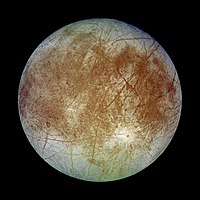
Photo from wikipedia
Internal waves are one of the various phenomena that occur at sea, and they affect acoustic equipment and sea density measurement equipment. In this study, internal waves are simulated using… Click to show full abstract
Internal waves are one of the various phenomena that occur at sea, and they affect acoustic equipment and sea density measurement equipment. In this study, internal waves are simulated using computational fluid dynamics method in the presence of a submarine in a pre-stratified fluid. Several scenarios were implemented by Froude number changes and submersible velocity by using the Navier-Stokes k-ε turbulence model. Results indicate that the realizable k-ε turbulence model gives better results than the RNG k-ε model and the internal waves flow in this model are well represented, which increases the wavelength of the internal waves by increasing the Froude number and floating velocity, while the internal angle of the Kelvin waves is decreased. We also observe that increasing the floating velocity causes the turbulent velocity contours to increase due to the drag coefficient and its relationship with the Reynolds number. The Reynolds number increases with the increasing velocity of the float motion. The results indicate the efficiency of this method in the discovery of subsurface objects.
Journal Title: Journal of Ocean University of China
Year Published: 2020
Link to full text (if available)
Share on Social Media: Sign Up to like & get
recommendations!